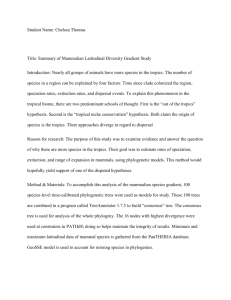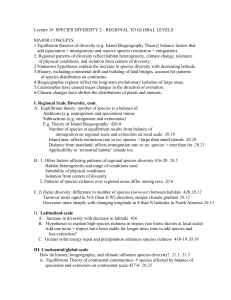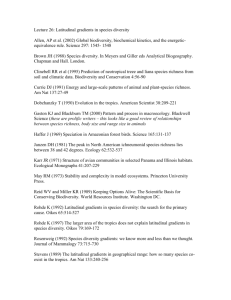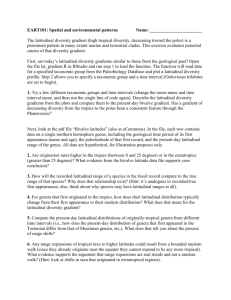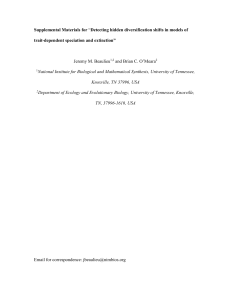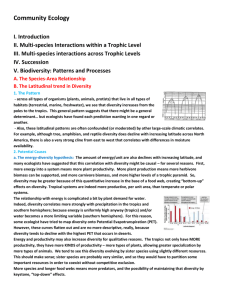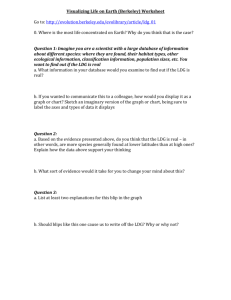File
advertisement
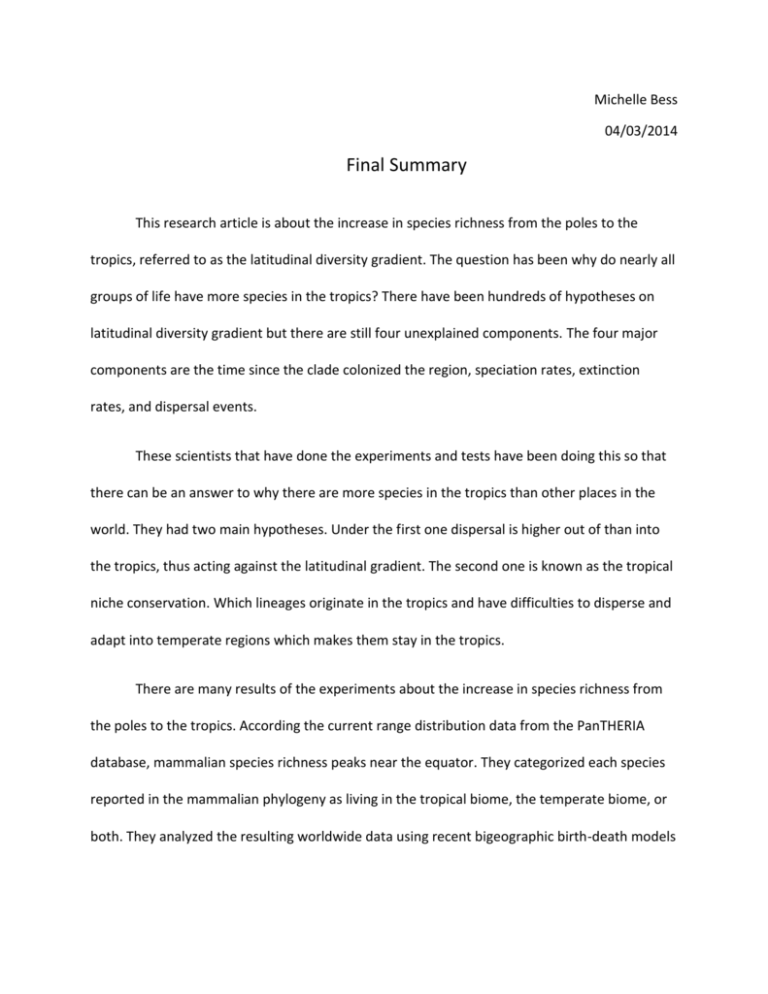
Michelle Bess 04/03/2014 Final Summary This research article is about the increase in species richness from the poles to the tropics, referred to as the latitudinal diversity gradient. The question has been why do nearly all groups of life have more species in the tropics? There have been hundreds of hypotheses on latitudinal diversity gradient but there are still four unexplained components. The four major components are the time since the clade colonized the region, speciation rates, extinction rates, and dispersal events. These scientists that have done the experiments and tests have been doing this so that there can be an answer to why there are more species in the tropics than other places in the world. They had two main hypotheses. Under the first one dispersal is higher out of than into the tropics, thus acting against the latitudinal gradient. The second one is known as the tropical niche conservation. Which lineages originate in the tropics and have difficulties to disperse and adapt into temperate regions which makes them stay in the tropics. There are many results of the experiments about the increase in species richness from the poles to the tropics. According the current range distribution data from the PanTHERIA database, mammalian species richness peaks near the equator. They categorized each species reported in the mammalian phylogeny as living in the tropical biome, the temperate biome, or both. They analyzed the resulting worldwide data using recent bigeographic birth-death models of diversification. The results of these tests help prove their theories to be correct or incorrect. Their goal is to prove or disprove their hypotheses. The main analyses were preformed on 100 species-level time calibrated phylogenetic trees randomly sampled from the Bayesian pseudo-posterior distribution of trees. They obtained minimum and maximum latitudinal data from the PanTHERIA database. When they tested for association between latitude and diversification rates, they used Geographic State Specification and Extinction model. For them to be able to test for an association between latitude and diversification rates they used the Geographic State Speciation and Extinction model. This birth-death model is a geographic extension of character-dependent diversification models. The results show the process underlying the latitudinal diversity gradient is poorly understood. The results in this discussion show that both speciation and extinction rates vary with latitude. The results show that speciation rates in mammals are higher in the tropics. This was supported by analyses of the global phylogeny, and in dispersal-constrained analyses for five of the eight orders. For primates and lagomorpha, no latitudinal difference in speciation was detected, and for carnivora a higher speciation rate was found in temperate regions. They found lower extinction rates in tropical regions for the global phylogeny and in dispersalconstrained analyses for the majority of the studied orders.
